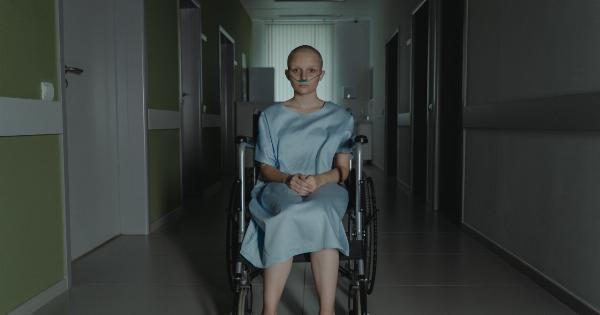Imagine the excitement of finally getting pregnant after years of trying, only to discover that the embryos implanted were not their own.
This devastating reality was faced by a couple who underwent in vitro fertilization (IVF) and were later informed by their fertility clinic that a mix-up had occurred.
Traumatic Turn of Events
For Sue and John, their journey to parenthood had been filled with numerous emotional ups and downs. The couple had tried unsuccessfully to conceive for several years before considering IVF as an option.
Finally, their dreams seemed within reach when they received the news that Sue was pregnant.
However, their joy quickly turned to shock and disbelief when they were informed by their fertility clinic that there had been a mistake. The embryos implanted during the IVF procedure were not genetically related to either Sue or John.
Instead, another couple’s embryos had been mistakenly used.
The Impact of the Mix-Up
This unimaginable mix-up had a profound impact on Sue and John’s lives. They not only had to come to terms with the fact that they were not genetically connected to the baby Sue was carrying, but they also faced the dilemma of what to do next.
While some couples may have chosen to terminate the pregnancy, Sue and John had already bonded with their unborn child and decided to continue their journey despite the genetic discrepancy.
This decision brought along its own set of challenges, as they had to navigate legal and ethical complexities involved in this unique situation.
The Legal Battle
Sue and John’s case sparked a legal battle that garnered significant media attention and raised important questions regarding the responsibilities of fertility clinics and the rights of couples affected by such mix-ups.
They pursued legal action against the fertility clinic for the emotional distress caused by the mistake and the subsequent loss of their genetic connection to their child.
The couple’s fight for justice exposed the need for stricter regulations and oversight within the fertility industry.
The case shed light on the potential risks and consequences faced by couples who place their trust in these clinics and highlighted the necessity for improved safeguards to prevent such devastating mix-ups from occurring in the future.
Emotional Turmoil
Emotionally, Sue and John were subjected to a whirlwind of conflicting feelings. On one hand, they were overjoyed at the prospect of becoming parents, while on the other, they mourned the loss of having a genetic connection to their child.
This rollercoaster of emotions took a toll on their mental well-being throughout the pregnancy.
The couple sought therapy and support groups to help them process their complex emotions. Connecting with others who had experienced similar mix-ups provided solace and a sense of shared understanding.
Through therapy, they were able to acknowledge their grief and gradually embrace their unique family dynamic.
The Gift of Parenthood
Despite the challenging circumstances, Sue and John welcomed their baby with open arms and an abundance of love. They recognized that family is built on love and not solely on genetics.
Their story resonated with countless individuals and shed light on the beauty and strength of non-traditional families.
As their child grew older, Sue and John were open and honest about the circumstances surrounding their conception. They ensured that their child understood the incredible love and desire that led them to pursue IVF.
The couple navigated the complexities of explaining their unique situation, emphasizing the importance of family bonds and unconditional love.
Fertility Clinic Accountability
The devastating mix-up experienced by Sue and John prompted an industry-wide call for greater accountability within fertility clinics.
The incident exposed gaps in training, protocols, and record-keeping systems that could potentially lead to more mix-ups in the future.
As a result, regulatory bodies intervened, implementing stricter guidelines and protocols to prevent such mishaps.
The incident served as a wake-up call for the industry and prompted a through reevaluation of procedures to ensure the highest level of accuracy and safety for all patients undergoing IVF treatments.
Support for Affected Couples
Sue and John’s story also raised awareness about the need for support services for couples who find themselves in similar situations.
Fertility clinics now provide enhanced emotional and psychological support for couples throughout their fertility journey, paying particular attention to those who have experienced mix-ups or discrepancies.
Support groups and counseling services have also emerged to assist couples in navigating the emotional challenges and complexities associated with such life-altering events.
These invaluable resources provide a safe space for individuals and couples to share their stories, find empathy and understanding, and receive guidance on how to move forward.
Preventive Measures
Taking a proactive approach, fertility clinics have implemented advanced identification systems and enhanced quality control measures to prevent further mix-ups.
Rigorous cross-verification processes are now in place to ensure that the right embryos are used for each patient, significantly minimizing the potential for errors.
Additionally, improved training protocols and emphasis on communication within clinics have been implemented to enhance patient safety and ensure the highest level of care.
The lessons learned from Sue and John’s devastating experience have catalyzed vital changes within the industry, resulting in increased confidence and security for individuals seeking fertility treatments.
Advocacy and Awareness
Sue and John’s willingness to share their story and fight for justice has had a lasting impact on the field of fertility treatments.
Their advocacy efforts and media exposure have helped raise awareness about the risks associated with IVF and ensure that couples are well-informed before embarking on this journey.
They have become vocal advocates for stronger regulations, increased transparency, and improved support services within the fertility industry.
Their determination to prevent others from experiencing similar heartache has sparked important conversations and prompted positive change in how fertility clinics operate.
Conclusion
Sue and John’s devastating discovery that wrong embryos were used for their pregnancy shook them to their core. However, their resilience, love for each other, and unwavering commitment to embracing parenthood led them on a remarkable journey.
This couple’s story shed light on the importance of accountability, support, and preventive measures within the fertility industry.
Their experience initiated crucial changes that will help protect countless couples from similar mix-ups in the future.
While the road was arduous, Sue and John’s story serves as a testament to the strength of the human spirit and the power of love.
Despite the challenges they faced, they proved that biology does not define family, and that ultimately, it is the bond of love that creates and sustains the most precious connections in our lives.































